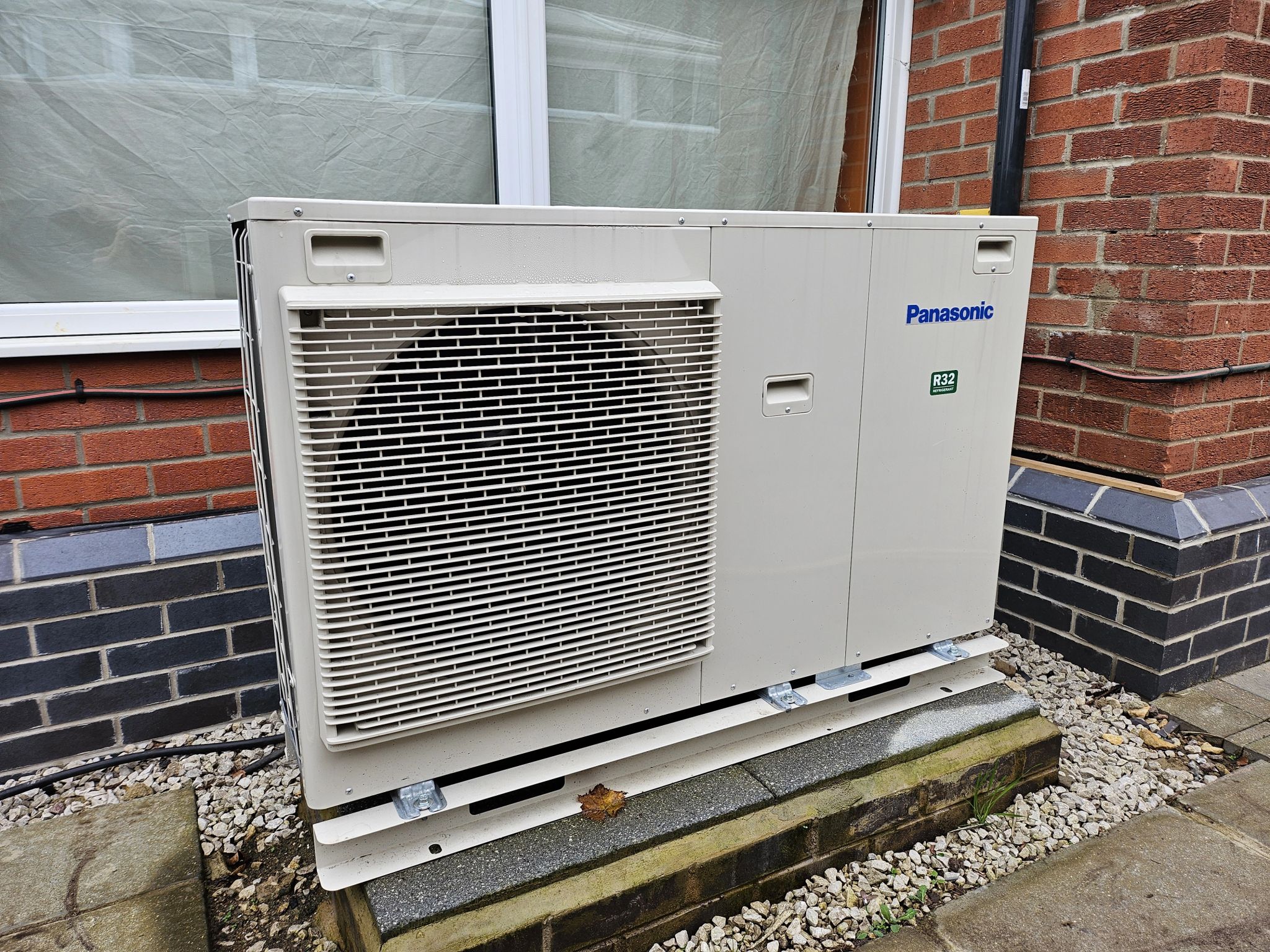Air Source Heat Pumps
How does an Air Source Heat Pump Work?
Air Source Heat Pumps (ASHPs) utilise water as the medium for heat exchange instead of air (air conditioners).
These systems feature an outdoor unit with a fan and a coil containing a refrigerant fluid that extracts heat from the surrounding outdoor air.
As the refrigerant absorbs heat, it vaporises and is compressed by a compressor, increasing its temperature and pressure. The hot, pressurised refrigerant then travels through a heat exchanger to transfer its heat to the water-based heating system.
In heating mode, the water absorbs the heat and circulates it through radiators, underfloor heating systems, or domestic hot water tanks, providing warmth throughout the building.
In cooling mode, the process is reversed, and excess heat from indoors is transferred to the outdoor air.
Water ASHPs are highly efficient and environmentally friendly, offering sustainable heating and cooling solutions for residential and commercial applications while reducing energy consumption and carbon emissions.

These are relatively compact and affordable systems that should achieve overall efficiencies in excess of 400% – this is referred to as the Seasonal Coefficient of Performance or SCOP, and is usually descrided as a percentage or as a ratio e.g. 4:1.
This is important as the current price of a unit of electricity is around 4x the cost of a unit of Gas (but a boiler is never 100% efficient – 90% at best). Modern ASHPs are now very quiet indeed, often being quieter than a conventional boiler flew when running.

